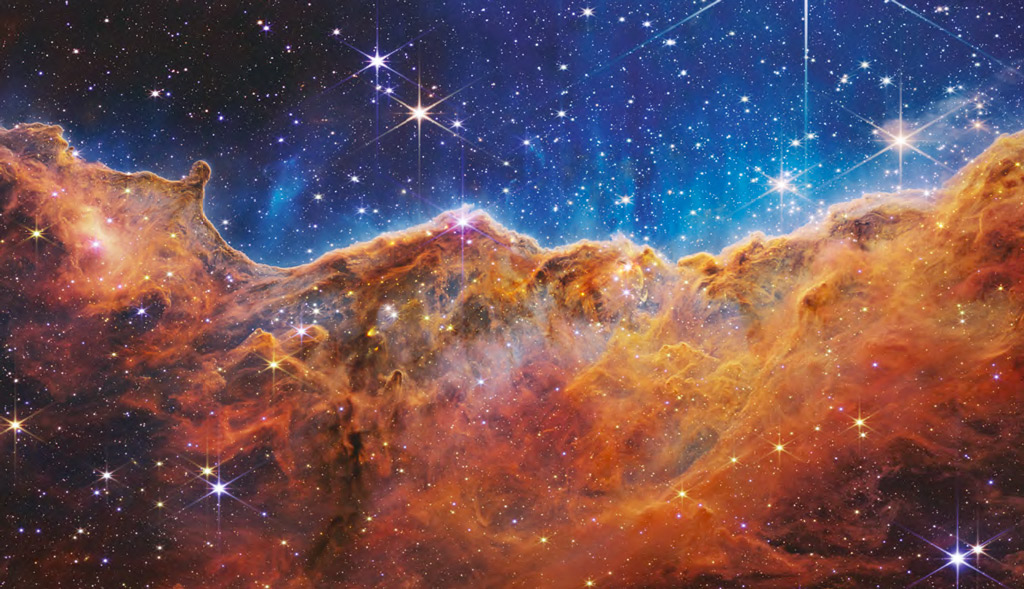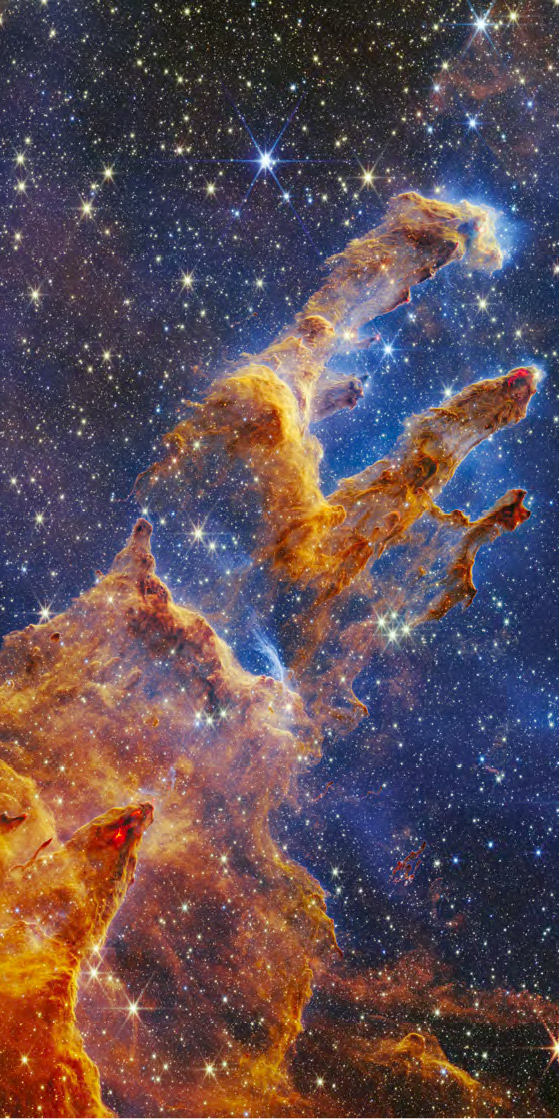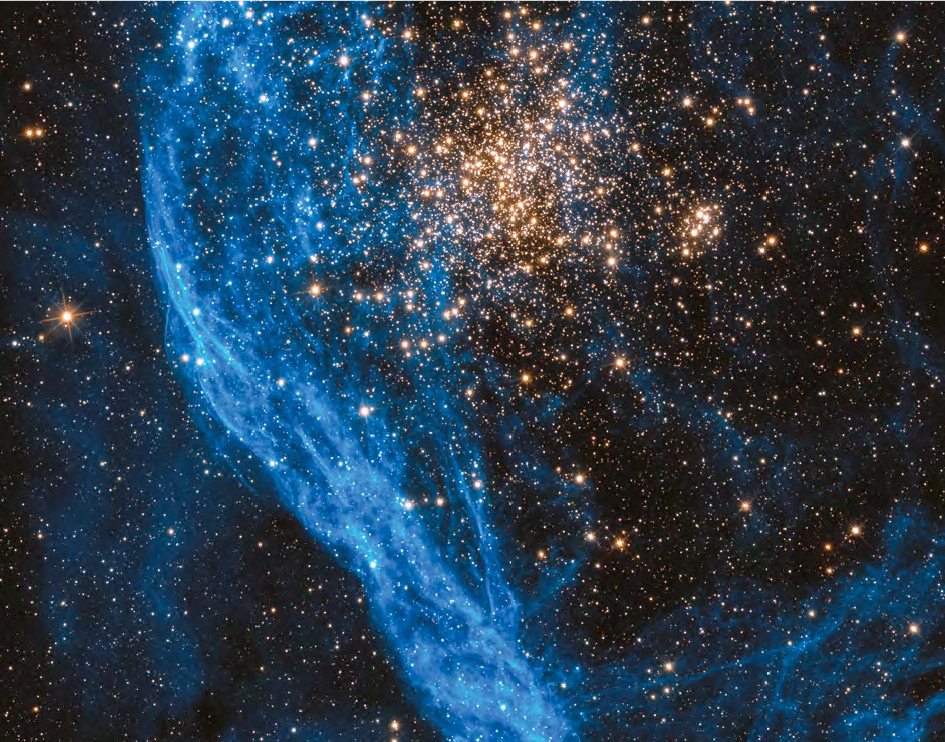
“Wonder bound”: the universe reveals its beauty
The Vatican Observatory Partners with Johns Hopkins University and the Space Telescope Science Institute on Its Inaugural Gallery Exhibition, WONDER BOUND.
Images from the Hubble and James Webb Space Telescopes Are Featured with Narratives by Leading Space Sciences Researchers as Part of the 2025 Jubilee Celebration
Castel Gandolfo, Italy, and Baltimore, MD, October 31, 2025 - The Vatican Observatory, Johns Hopkins University, and the Space Telescope Science Institute (STScI) announce the launch of WONDER BOUND, a stunning exhibit of cosmic imagery from the Hubble and James Webb Space Telescopes. Through large-scale images paired with narratives from leading space researchers, the exhibit reveals how the telescopes’ observations made possible through the collaborative work of thousands of people over decades have advanced scientific discovery and expanded humanity’s understanding of the cosmos.
Opening November 3 in Castel Gandolfo, Italy on the grounds of the Papal Summer Palace and as part of the 2025 Jubilee celebration WONDER BOUND is the inaugural exhibition in the Observatory’s new Specola Gallery. As part of the Vatican Museums, the Observatory and its Gallery are open to the public; reservations can be made through the Museums’ website in English or Italian.
The exhibition will transport visitors into the deepest reaches of space through large-scale, full-color prints of iconic images from the Hubble and James Webb Space Telescopes. Featuring Jupiter’s auroras, depictions of exoplanets, and luminous star nurseries, the images bring thriving celestial systems to life at a breathtaking scale that offers viewers an up-close encounter with the universe. Each image will be accompanied by insights from a leading Johns Hopkins or STScI researcher, linking their awe- inspiring beauty with the discoveries they’ve unlocked.
As His Holy Father, Pope Leo, affirmed to participants in the Vatican Observatory’s 2025 Summer School session, the “images fill us with wonder, and indeed a mysterious joy, as we contemplate their sublime beauty.”
Since their launches - Hubble in 1990 and James Webb in 2021 - the telescopes have provided new insights into a wide variety of celestial phenomena, shed light on our cosmic origins and revealed new views of the infant universe. Together, they have delivered nearly two million observations of more than 100 million astronomical objects, fueling thousands of scientific papers, stirring the human imagination, and opening new realms of possibility for what lies beyond our current reach.
Brother Guy Consolmagno, a meteor expert and Emeritus Director of the Vatican Observatory, contributed: “These remarkable images make you feel like you’re immersed within the nebulae and the galaxies themselves. Displaying their beauty and the wonderful scientific discoveries connected to them are ways that we give glory to their Creator. It’s a pleasure to share this experience with guests of the Vatican Observatory’s Visitor Center.”
Astrophysicist Ray Jayawardhana, Provost of Johns Hopkins University, added: “These spectacular images transform particles of dust and gas into cathedrals of wonder and knowledge, revealing the unfolding story of the cosmos and our place within it. They are testaments to human ingenuity and curiosity, rekindling a sense of awe in all of us and hopefully inspiring the next generation of scientists to continue our cosmic quest.”
WONDER BOUND includes contributions from Johns Hopkins and STScI researchers including Nobel laureate cosmologist Adam Riess, astrophysicists Ray Jayawardhana and Rosemary F. G.Wyse, planetary scientists Massimo Robberto and Sabine Stanley, exoplanet expert David Sing, and cosmologist and former Head of Mission for the JWST, Massimo Stiavelli.
Dr. Jennifer Lotz, Director of STScI, the science operations center for the Hubble, James Webb, and Nancy Grace Roman Space Telescopes shared, “This exhibit offers the public an exceptional opportunity to explore how the Hubble and James Webb telescopes are transforming our understanding of the universe, reshaping scientific knowledge, and inspiring deeper questions.”
Following the end of its Specola Gallery display in the summer of 2026, WONDER BOUND will become part of the Papal Palace’s permanent collection. The exhibition is sponsored by Johns Hopkins Wavelengths, a program dedicated to connecting cutting-edge research with public audiences.
The Vatican Observatory/Specola Vaticana is one of the world’s oldest astronomical institutes, tracing its lineage to observatories established on Vatican properties beginning in the 18th century. Housed on the grounds of the Papal Summer Palace in Castel Gandolfo, the Observatory is a research center that continues a centuries-long tradition of scientific discoveries, including those from Jesuit astronomer Father Angelo Secchi, who first classified stars according to their spectra.
Johns Hopkins University was founded in 1876 as the first research university in the United States. It is recognized worldwide for discoveries that have advanced knowledge and transformed lives. From breakthroughs in space science, medicine, and public health to innovations in engineering, the arts, and the humanities, Johns Hopkins brings the power of discovery to bear on society’s greatest challenges. Guided by its mission to share knowledge for the benefit of humanity, the university continues to deepen our understanding of the world we inhabit and the universe beyond, while strengthening communities and shaping a healthier, more hopeful future.
The Space Telescope Science Institute (STScI), located on the Johns Hopkins campus, is the Science Operations Center for NASA’s Hubble, James Webb, and Nancy Grace Roman Space Telescopes; it is also the Mission Operations Center for James Webb. Its mission is threefold: to excel in scientific operations for NASA’s current and future flagship missions; to advance cutting-edge astronomical research, archives, and tools for scientific discovery; and make the world’s astronomical data accessible to all. Through this work, the institute supports the global research community in expanding the frontiers of astronomy, while inspiring the public to explore and share in the wonders of the universe.
Learn more:
Space Telescope Science Institut

Pillars of Creation (JWST)
Image credit: NASA, ESA, CSA;
Processing: Joseph DePasquale, Anton Koekemoer and Alyssa Pagan (STScI)
Immagine ad alta risoluzione:

NGC 1850 (Hubble)
Image Credit: NASA, ESA, and P. Goudfrooij (STScI);
Processing: Gladys Kober, NASA/Catholic University of America
Immagine ad alta risoluzione:

Cosmic Cliffs (JWST)
Image credit: NASA, ESA, CSA, and STScI
Immagine ad alta risoluzione:





